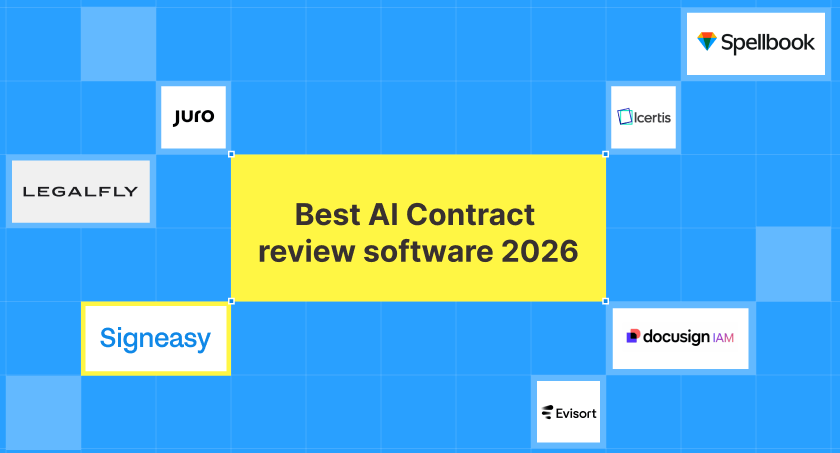There is a unique tale to tell about every employee's journey. It starts with the hiring experience and goes on to feature many storyline twists and turns related to onboarding, promotions, wellbeing initiatives, and so on.
It's your job, as HR, to track the progress of each employee’s story and take corrective steps whenever red flags are raised. Why? Simply because you cannot afford a poor employee experience or unhappy employees.
Did you know that 70% of businesses suffer financially as they struggle to fill newly vacant positions, burdened by the cost of recruiting, hiring, training a replacement employee, etc? Society for Human Resource Management (SHRM) even reports that replacing an employee can cost a whopping 6 to 9 months of their salary on average.
Clearly, better employee retention strategies are your salvation.
Read on as we unpack the different employee retention ideas for businesses (big or small) to incorporate into their HR strategy:
Employee retention strategies for 2021
When an employee decides to leave their job, it's a big decision.
And only if you pay attention will you be able to identify the reason for this decision. It could be owing to a lack of sufficient career development, flexibility, or competitive compensation, or even a micromanaging boss.
As companies are fighting over securing the right talent in a post-pandemic world, addressing a few such common problem areas can help you retain your people.
On that note, here are new ideas for employee retention policies.
Provide more positive feedback
To keep your most important business asset ‘happy’, many companies offer pricey perks such as free food, company trips, gym memberships. But they are no substitute for some good, old-fashioned acknowledgment for work done that meets or exceeds expectations. This not only reinforces good behavior but also fosters a productive environment, which equals higher employee retention.
The feedback can't all be positive though. Some of it should be consecutive in nature too. In fact, according to a Harvard Business Review study, the positive to constructive suggestions ratio should ideally be 5.6: 1. This means you need to share six positive comments for every corrective one.
Foster respect in the workplace
One of the top reasons for employees quitting their job is toxic work culture. The issue might exist between employees and managers or between peers, in the form of discriminatory actions, power-play, politics, and uncivil behavior.
No high-performing employee will last long in such an unfriendly environment solely because respect is missing.
To plug this gap, you need to celebrate each member’s wins as a team, encourage kindness in the workplace, give employees the freedom to pursue their ideas, publicly back their decisions, and run workshops about workplace biases and unacceptable behavior.
Build trust in the workplace
Not being physically able to see how employees spend every minute of their work hours makes bosses want to play Big Brother and micromanage them. In fact, many employers are embedding tracking technologies onto employee’s work devices to monitor their movement and the online activity on and off the clock.
While the management sees it as an effort to improve productivity, all it ends up doing is increase stress, lower self-esteem, and decreased job satisfaction amongst employees. And your employees are out of the door before you can say ’let me see your timesheets’.
To build a culture of trust, it's important to be transparent about the company’s or department's interests and the employee’s role in attaining company goals. This will build a sense of purpose in them. Also, encourage the management team to demonstrate honesty and transparency in their work, so that others may model such behavior.
Encourage employees to share feedback
Feedback and two-way communication is the cornerstone of any relationship, including the ones between a business and its employees. While managers share their feedback during performance reviews, employers don't always get a chance to air their concerns.
By unclogging blocked communication channels you can create an energizing, healthy work culture, where employee’s opinions are heard and valued. Feedback loops also make employees more emotionally invested in the success of your business.
Employee retention rates are sure to improve if you set up sessions with managers and HR where they can regularly give and receive constructive feedback.
Challenge employees in a balanced way
Working from home can get boring and monotonous. To keep employees motivated and intrigued it's important to add new, attainable challenges to their existing set of responsibilities.
At the same time, be sure to help your people upskill and offer the necessary resources and management support to complete such new tasks. Also, be mindful of setting realistic deadlines for these challenges so that the work doesn't get too overwhelming.
Encourage a healthy work-life balance
As hybrid workspaces become the norm, the employees’ boundaries between work and life are blurring. They are torn between taking ad-hoc work requests and juggling chores at home, ultimately spending longer hours at work.
No wonder employees are burning out! To avoid such a demotivating scenario, you need to offer employees the:
- Support to create a dedicated workspace and schedule, beyond which they are discouraged from answering work related calls/emails
- Paid time-off for volunteering, holidaying and improving mental and physical health
- Access to productivity-enhancing technologies (such as eSignature tools) that help employees better manage their time
- Requisite time and resources to indulge in hobbies and wellness activities
Improve communication within your team
Today, your employees are in their home office, trying to overcome the physical distance and work together as a team. Communicating with and amongst them can be a challenge, as email and voice communication lacks that personal touch. Also, not being in the same workspace makes it difficult to build a sense of camaraderie within the team, limits the free exchange of ideas, feedback, and opinions, and makes it difficult to brainstorm effectively.
So that your workforce doesn't feel left-out, constrained, or misunderstood, here are a few measures to adopt:
- Conduct AR or VR-powered town hall sessions with break-out feedback sessions, where changes and big decisions are discussed. This will make your people feel like the management is them personally, face to face.
- Use collaboration tools for group video calls to conduct training, team events and brainstorming sessions
- Establish an ‘open-door’ (or in the present circumstances “call-anytime”) policy to build a culture of open bottom-up communication
- Host more online team-building activities (such as team lunches, online games and celebration of festivals on video calls) and peer-to-peer recognition programs to banish workplace loneliness.
- Hire those who are comfortable using technologies to stay connected with their remote teams so that they can get comfortable and can contribute faster.
Find out more about Signeasy’s electronic signature solution that improves employee retention and experience by cutting down on time and effort spent on mundane paperwork.











